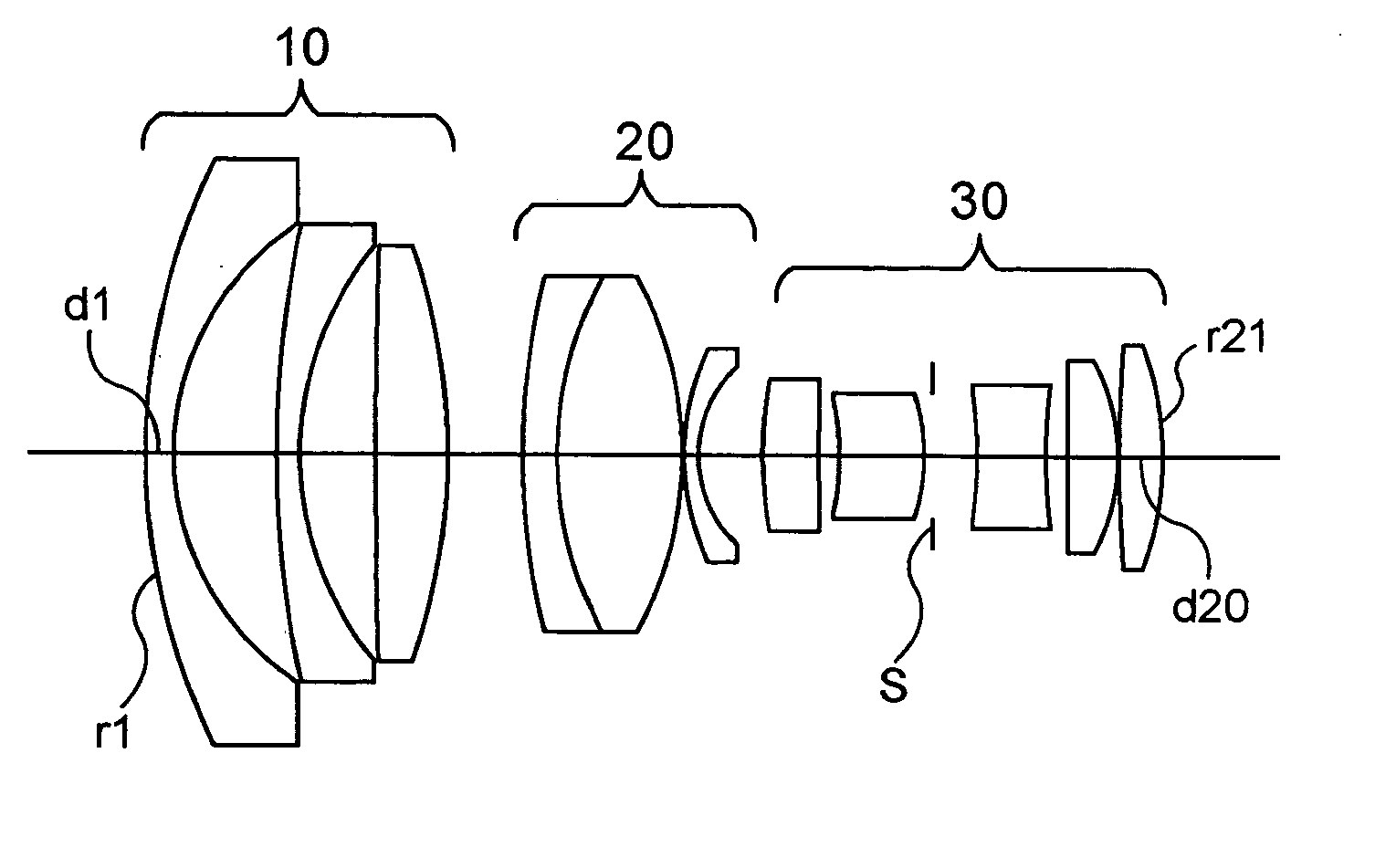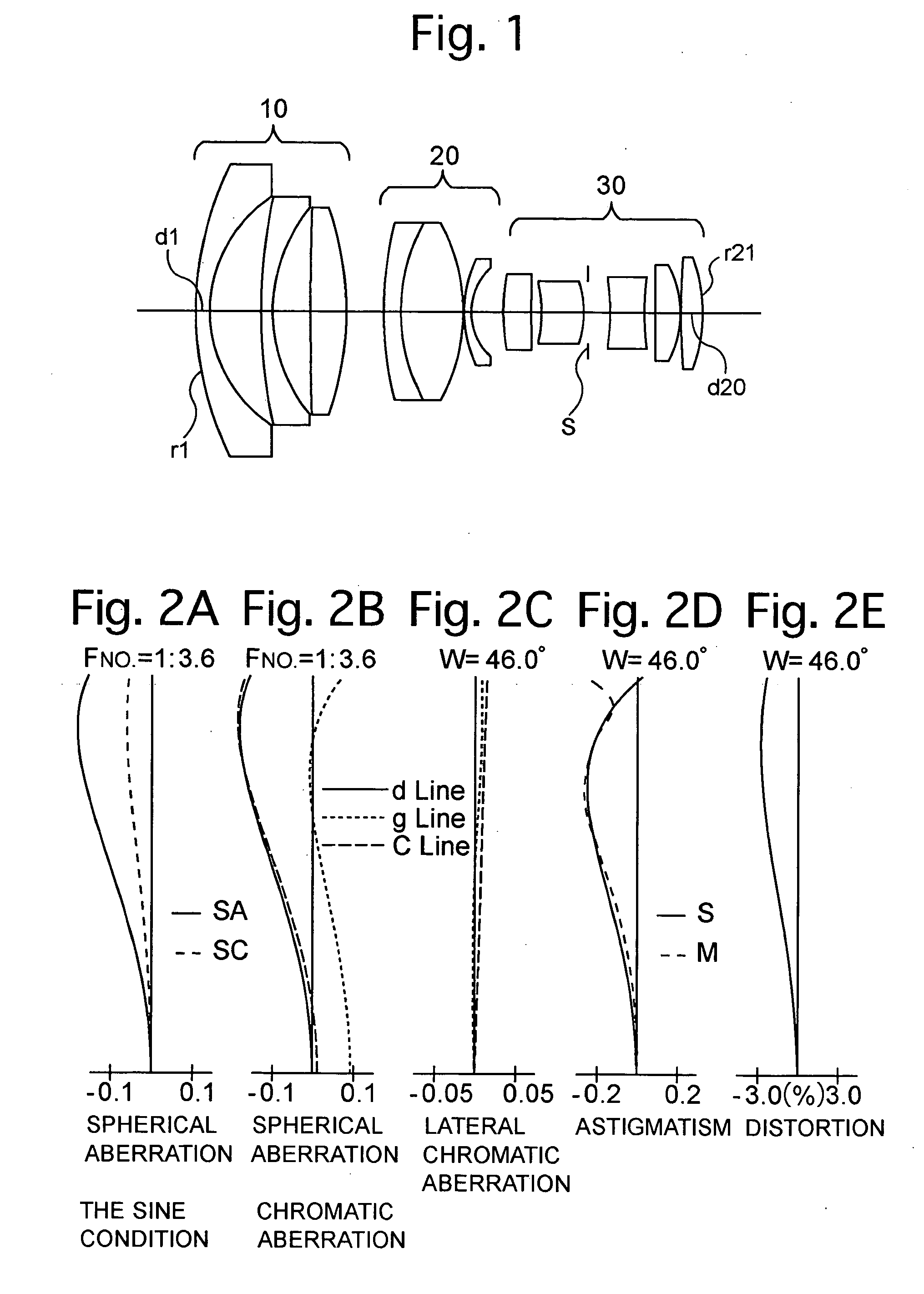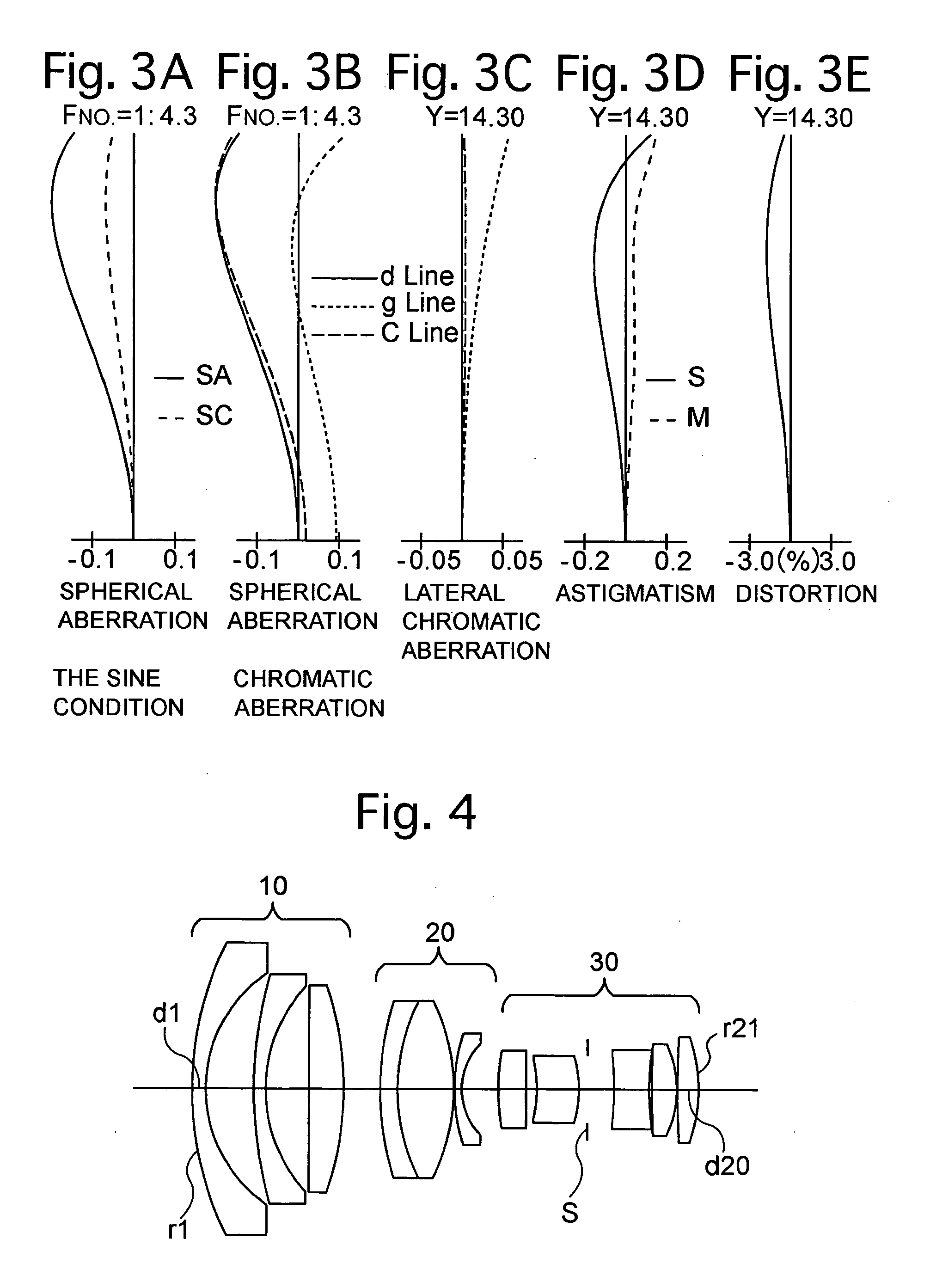Wide-angle lens system
a wide-angle lens and lens system technology, applied in the field of wide-angle lens systems, can solve the problems of difficult to increase the size of imaging devices, and achieve the effect of prolonging the back focal distan
- Summary
- Abstract
- Description
- Claims
- Application Information
AI Technical Summary
Benefits of technology
Problems solved by technology
Method used
Image
Examples
embodiment 1
[Embodiment 1]
[0074]FIG. 1 is the lens arrangement of the wide-angle lens system according to the first embodiment of the present invention. FIGS. 2A through 2E show aberrations occurred in the lens arrangement of FIG. 1 when an object at infinity is in an in-focus state. FIGS. 3A through 3E show aberrations occurred in the lens arrangement of FIG. 1 when an object at the shortest photographic distance is in an in-focus state. Table 1 shows the numerical data of the first embodiment.
[0075] The negative first lens group 10 includes the two negative meniscus lens elements each having the convex surface facing toward the object, and the positive lens element, in this order from the object.
[0076] The negative second lens group 20 includes the cemented lens elements and the negative meniscus lens element having the convex surface facing toward the object, in this order from the object.
[0077] The positive third lens group 30 includes the positive biconvex lens element, the positive men...
embodiment 2
[Embodiment 2]
[0080]FIG. 4 is the lens arrangement of the wide-angle lens system according to the second embodiment of the present invention. FIGS. 5A through 5E show aberrations occurred in the lens arrangement of FIG. 4 when an object at infinity is in an in-focus state. FIGS. 6A through 6E show aberrations occurred in the lens arrangement of FIG. 4 when an object at the shortest photographic distance is in an in-focus state.
[0081] The basic lens arrangement of the second embodiment is the same as that of the first embodiment.
[0082] Table 2 shows the numerical data of the second embodiment. The diaphragm S is provided 1.2 behind surface No. 15.
TABLE 2FNO. = 1: 3.6-3.6f = 14.41-14.78m = 0.000-−0.136fB = 36.62-38.84Surf.No.rdNdν148.3461.901.7725049.6220.2836.86359.9451.701.8061040.9422.2356.115∞4.931.8051825.46−47.0135.18-2.96743.1042.501.7130053.9828.3888.061.5163364.19−28.3880.111026.6841.001.8040046.6119.4155.211232.8764.001.8051825.413−1071.8451.5214−19.8786.001.4874970.215−...
embodiment 3
[Embodiment 3]
[0083]FIG. 7 is the lens arrangement of the wide-angle lens system according to the third embodiment of the present invention. FIGS. 8A through 8E show aberrations occurred in the lens arrangement of FIG. 7 when an object at infinity is in an in-focus state. FIGS. 9A through 9E show aberrations occurred in the lens arrangement of FIG. 7 when an object at the shortest photographic distance is in an in-focus state.
[0084] The basic lens arrangement of the third embodiment is the same as that of the first embodiment.
[0085] Table 3 shows the numerical data of the third embodiment. The diaphragm S is provided 0.6 behind surface No. 15.
TABLE 3FNO. = 1: 2.9-3.0f = 14.40-14.66m = 0.000-−0.132fB = 36.15-38.17Surf. No.rdNdν148.4862.201.7725049.6222.7018.05369.0961.701.7725049.6427.8625.655239.4145.301.7847026.36−64.5607.99-5.96755.6411.441.7130053.9822.6976.641.5163364.19−33.2130.111025.9201.001.8040046.6119.0652.571229.8624.001.7847026.313−121.2201.6214−14.4906.001.4874970.2...
PUM
 Login to View More
Login to View More Abstract
Description
Claims
Application Information
 Login to View More
Login to View More - R&D
- Intellectual Property
- Life Sciences
- Materials
- Tech Scout
- Unparalleled Data Quality
- Higher Quality Content
- 60% Fewer Hallucinations
Browse by: Latest US Patents, China's latest patents, Technical Efficacy Thesaurus, Application Domain, Technology Topic, Popular Technical Reports.
© 2025 PatSnap. All rights reserved.Legal|Privacy policy|Modern Slavery Act Transparency Statement|Sitemap|About US| Contact US: help@patsnap.com



